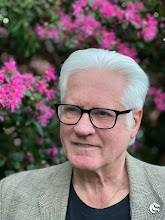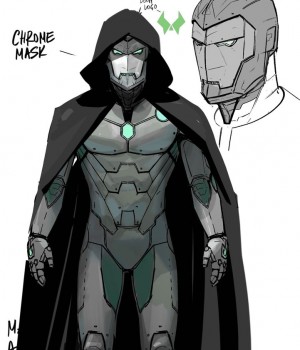It begins:
For as long as recorded human history, myths, legends, and folk tales have described non-human but anthropomorphic beings, some of them with superhuman abilities. In our contemporary context, the recurrent narrative tropes of alien contact and more-or-less rationalised bodily metamorphosis provide storytellers with opportunities to depict confrontations between "normal" humans and powerful anthropomorphic beings. Human, or humanlike, beings with extraordinary powers are now staples of science fiction, and of the popular comic book, television, and movie franchises devoted to the adventures of superheroes. Indeed, the contemporary mythology of superheroes and supervillains displays our fascination with imagined beings who possess great power, yet stand somewhere between us and the transcendent God of the monotheistic theological traditions, or even the ageless, blessed, infinitely resilient gods of Classical mythology.If your interest is piqued (and you have access), read on!
Much could be said about the symbolic and cultural meanings that have accrued to anthropomorphic superbeings, and about our evident need to tell stories in which they feature. One context is provided by an age-old question: "What is it to be human?" Or, in Martha Nussbaum's phrasing, "What is it to live as a being situated, so to speak, between the beasts and the gods, with certain abilities that set us off from the rest of the world of nature, and yet with certain limits that come from our membership in the world of nature?" I will return to that, but my eventual target is an elusive question of ethical or political philosophy. I am concerned with the literal prospect that anthropomorphic superbeings could emerge in future societies. What should we make of this possibility? More specifically, should we welcome it, or resist it?
I will argue for a conclusion that I am not entirely pleased about. I believe that technologies of human redesign should generally be tolerated, even by those who find the whole idea bizarre or frightening, but I will argue here that there is a need for some caution. There are some important considerations about what the social and political order can bear. I would prefer to offer a more wholehearted endorsement of the creation of new kinds of anthropomorphic beings, but I have followed to its apparent outcome what I believe to be the logic of the situation.
1
I will return to that, but my eventual target is an elusivequestion of ethical or political philosophy. I am concerned with the literal prospectthat anthropomorphic superbeings could emerge in future societies. What should wemake of this possibility? More specifically, should we welcome it, or resist it?I will argue for a conclusion that I am not entirely pleased about. I believe thattechnologies of human redesign should generally be tolerated, even by those who findthe whole idea bizarre or frightening, but I will argue here that there is a need forsome caution. There are some important considerations about what the social andpolitical order can bear. I would prefer to offer a more wholehearted endorsement ofthe creation of new kinds of anthropomorphic beings, but I have followed to itsapparent outcome what I believe to be the logic of the situation.
or as long as recorded human history, myths, legends, and folk tales have describednon-human but anthropomorphic beings, some of them with superhuman abilities. Inour contemporary context, the recurrent narrative tropes of alien contact and more-or-less rationalised bodily metamorphosis provide storytellers with opportunities todepict confrontations between "normal" humans and powerful anthropomorphicbeings. Human, or humanlike, beings with extraordinary powers are now staples ofscience fiction, and of the popular comic book, television, and movie franchisesdevoted to the adventures of superheroes. Indeed, the contemporary mythology ofsuperheroes and supervillains displays our fascination with imagined beings whopossess great power, yet stand somewhere between us and the transcendent God of themonotheistic theological traditions, or even the ageless, blessed, infinitely resilientgods of Classical mythology.Much could be said about the symbolic and cultural meanings that haveaccrued to anthropomorphic superbeings, and about our evident need to tell stories inwhich they feature. One context is provided by an age-old question: "What is it to behuman?" Or, in Martha Nussbaum's phrasing, "What is it to live as a being situated, soto speak, between the beasts and the gods, with certain abilities that set us off from therest of the world of nature, and yet with certain limits that come from our membershipin the world of nature?"
1
I will return to that, but my eventual target is an elusivequestion of ethical or political philosophy. I am concerned with the literal prospectthat anthropomorphic superbeings could emerge in future societies. What should wemake of this possibility? More specifically, should we welcome it, or resist it?I will argue for a conclusion that I am not entirely pleased about. I believe thattechnologies of human redesign should generally be tolerated, even by those who findthe whole idea bizarre or frightening, but I will argue here that there is a need forsome caution. There are some important considerations about what the social andpolitical order can bear. I would prefer to offer a more wholehearted endorsement ofthe creation of new kinds of anthropomorphic beings, but I have followed to itsapparent outcome what I believe to be the logic of the situation.
or as long as recorded human history, myths, legends, and folk tales have describednon-human but anthropomorphic beings, some of them with superhuman abilities. Inour contemporary context, the recurrent narrative tropes of alien contact and more-or-less rationalised bodily metamorphosis provide storytellers with opportunities todepict confrontations between "normal" humans and powerful anthropomorphicbeings. Human, or humanlike, beings with extraordinary powers are now staples ofscience fiction, and of the popular comic book, television, and movie franchisesdevoted to the adventures of superheroes. Indeed, the contemporary mythology ofsuperheroes and supervillains displays our fascination with imagined beings whopossess great power, yet stand somewhere between us and the transcendent God of themonotheistic theological traditions, or even the ageless, blessed, infinitely resilientgods of Classical mythology.Much could be said about the symbolic and cultural meanings that haveaccrued to anthropomorphic superbeings, and about our evident need to tell stories inwhich they feature. One context is provided by an age-old question: "What is it to behuman?" Or, in Martha Nussbaum's phrasing, "What is it to live as a being situated, soto speak, between the beasts and the gods, with certain abilities that set us off from therest of the world of nature, and yet with certain limits that come from our membershipin the world of nature?"
1
I will return to that, but my eventual target is an elusivequestion of ethical or political philosophy. I am concerned with the literal prospectthat anthropomorphic superbeings could emerge in future societies. What should wemake of this possibility? More specifically, should we welcome it, or resist it?I will argue for a conclusion that I am not entirely pleased about. I believe thattechnologies of human redesign should generally be tolerated, even by those who findthe whole idea bizarre or frightening, but I will argue here that there is a need forsome caution. There are some important considerations about what the social andpolitical order can bear. I would prefer to offer a more wholehearted endorsement ofthe creation of new kinds of anthropomorphic beings, but I have followed to itsapparent outcome what I believe to be the logic of the situation.
or as long as recorded human history, myths, legends, and folk tales have describednon-human but anthropomorphic beings, some of them with superhuman abilities. Inour contemporary context, the recurrent narrative tropes of alien contact and more-or-less rationalised bodily metamorphosis provide storytellers with opportunities todepict confrontations between "normal" humans and powerful anthropomorphicbeings. Human, or humanlike, beings with extraordinary powers are now staples ofscience fiction, and of the popular comic book, television, and movie franchisesdevoted to the adventures of superheroes. Indeed, the contemporary mythology ofsuperheroes and supervillains displays our fascination with imagined beings whopossess great power, yet stand somewhere between us and the transcendent God of themonotheistic theological traditions, or even the ageless, blessed, infinitely resilientgods of Classical mythology.Much could be said about the symbolic and cultural meanings that haveaccrued to anthropomorphic superbeings, and about our evident need to tell stories inwhich they feature. One context is provided by an age-old question: "What is it to behuman?" Or, in Martha Nussbaum's phrasing, "What is it to live as a being situated, soto speak, between the beasts and the gods, with certain abilities that set us off from therest of the world of nature, and yet with certain limits that come from our membershipin the world of nature?"
1
I will return to that, but my eventual target is an elusivequestion of ethical or political philosophy. I am concerned with the literal prospectthat anthropomorphic superbeings could emerge in future societies. What should wemake of this possibility? More specifically, should we welcome it, or resist it?I will argue for a conclusion that I am not entirely pleased about. I believe thattechnologies of human redesign should generally be tolerated, even by those who findthe whole idea bizarre or frightening, but I will argue here that there is a need forsome caution. There are some important considerations about what the social andpolitical order can bear. I would prefer to offer a more wholehearted endorsement ofthe creation of new kinds of anthropomorphic beings, but I have followed to itsapparent outcome what I believe to be the logic of the situation.

